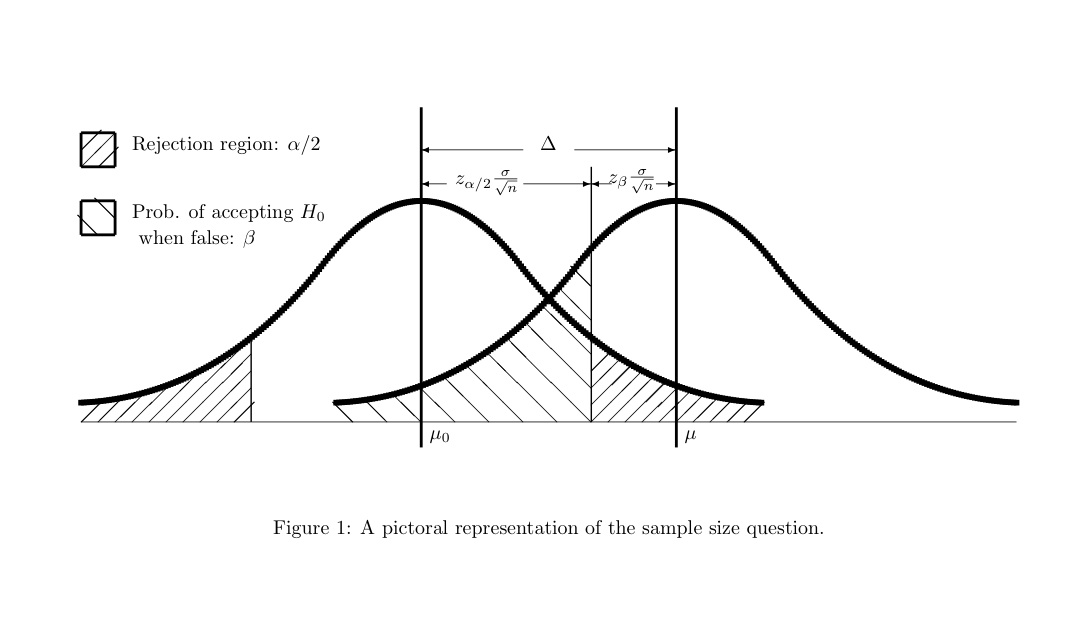ShopDreamUp AI ArtDreamUp
Deviation Actions
Description
I spent several hours (read: 8) creating this figure in the LaTeX picture environment for one of my math notes. It is created out of 6 simple bezier curves, many, many line segments, and text and whatnot. The reason some of the lines "go over" where they should is because LaTeX has a minimum line segment length of 3mm. If you don't know what LaTeX is, please consider carefully any critiques you give: this is not any sort of graphical package.
I consider designing readable, understandable, visually lucid mathematical figures to be a form of visual art, especially in a text-based document markup language!
You should be able to click "download" to see the full pdf of which this is part.
In case you don't believe me about the critique thing, here is the code for this picture:
\begin{figure}
\setlength{\unitlength}{.3cm}
\begin{picture}(30,20)(0,-5)
\put(0,-1){\line(1,0){55}}
\linethickness{1mm}
\qbezier(0,0.132955)(8,0.5)(14,7.98256)
\qbezier(40,0.132955)(32,0.5)(26,7.98256)
\qbezier(14,7.98256)(20,16)(26,7.98256)
\qbezier(15,0.132955)(23,0.5)(29,7.98256)
\qbezier(55,0.132955)(47,0.5)(41,7.98256)
\qbezier(29,7.98256)(35,16)(41,7.98256)
\linethickness{.5mm}
\put(20,-2.5){\line(0,1){20}}
\put(35,-2.5){\line(0,1){20}}
\linethickness{.25mm}
\put(10,-1){\line(0,1){5}}
\put(30,-1){\line(0,1){15}}
\thinlines
%shading of alpha/2 region
\put(0,-1){\line(1,1){1.2}}
\put(1,-1){\line(1,1){1.3}}
\put(2,-1){\line(1,1){1.5}}
\put(3,-1){\line(1,1){2.2}}
\put(4,-1){\line(1,1){3.0}}
\put(5,-1){\line(1,1){4.4}}
\put(6,-1){\line(1,1){4}}
\put(7,-1){\line(1,1){3}}
\put(8,-1){\line(1,1){2}}
\put(9,-1){\line(1,1){1.2}}
\put(30,-1){\line(1,1){3}}
\put(30,0){\line(1,1){2.4}}
\put(30,1){\line(1,1){1.7}}
\put(30,2){\line(1,1){1.2}}
\put(31,-1){\line(1,1){2.7}}
\put(32,-1){\line(1,1){2.4}}
\put(33,-1){\line(1,1){2.1}}
\put(34,-1){\line(1,1){1.9}}
\put(35,-1){\line(1,1){1.7}}
\put(36,-1){\line(1,1){1.42}}
\put(37,-1){\line(1,1){1.35}}
\put(38,-1){\line(1,1){1.25}}
\put(39,-1){\line(1,1){1.2}}
%shading under beta
\put(30,-1){\line(-1,1){5}}
\put(30,1){\line(-1,1){4}}
\put(30,3){\line(-1,1){2.9}}
\put(30,5){\line(-1,1){1.9}}
\put(30,7){\line(-1,1){1.2}}
\put(28,-1){\line(-1,1){4.2}}
\put(26,-1){\line(-1,1){3.3}}
\put(24,-1){\line(-1,1){2.7}}
\put(22,-1){\line(-1,1){2.1}}
\put(20,-1){\line(-1,1){1.55}}
\put(18,-1){\line(-1,1){1.3}}
\put(16,-1){\line(-1,1){1.2}}
\linethickness{.5mm}
\put(0,14){\line(1,0){2}}
\put(0,14){\line(0,1){2}}
\put(2,16){\line(0,-1){2}}
\put(2,16){\line(-1,0){2}}
\put(0,14){\line(1,1){2}}
\thinlines
\put(1,14){\line(1,1){1.2}}
\put(0,15){\line(1,1){1.2}}
\linethickness{.5mm}
\put(0,10){\line(1,0){2}}
\put(0,10){\line(0,1){2}}
\put(2,12){\line(0,-1){2}}
\put(2,12){\line(-1,0){2}}
\thinlines
\put(1,10){\line(-1,1){1.2}}
\put(2,11){\line(-1,1){1.2}}
\put(3,15){Rejection region: $\alpha/2$}
\put(3,11){Prob. of accepting $H_0$}
\put(3,9.5){ when false: $\beta$}
\put(20.5,-2){$\mu_0$}
\put(35.5,-2){$\mu$}
\put(27,15){$\Delta$}
\put(26,15){\vector(-1,0){6}}
\put(29,15){\vector(1,0){6}}
\put(21.5,13){\vector(-1,0){1.5}}
\put(22,13){$z_{\alpha/2}\frac{\sigma}{\sqrt{n}}$}
\put(26,13){\vector(1,0){4}}
\put(31,13.1){$z_\beta \frac{\sigma}{\sqrt{n}}$}
\put(31.2,13){\vector(-1,0){1.2}}
\put(33.8,13){\vector(1,0){1.2}}
\end{picture}
\caption{A pictoral representation of the sample size question.} \label{normalpic}
\end{figure}
I consider designing readable, understandable, visually lucid mathematical figures to be a form of visual art, especially in a text-based document markup language!
You should be able to click "download" to see the full pdf of which this is part.
In case you don't believe me about the critique thing, here is the code for this picture:
\begin{figure}
\setlength{\unitlength}{.3cm}
\begin{picture}(30,20)(0,-5)
\put(0,-1){\line(1,0){55}}
\linethickness{1mm}
\qbezier(0,0.132955)(8,0.5)(14,7.98256)
\qbezier(40,0.132955)(32,0.5)(26,7.98256)
\qbezier(14,7.98256)(20,16)(26,7.98256)
\qbezier(15,0.132955)(23,0.5)(29,7.98256)
\qbezier(55,0.132955)(47,0.5)(41,7.98256)
\qbezier(29,7.98256)(35,16)(41,7.98256)
\linethickness{.5mm}
\put(20,-2.5){\line(0,1){20}}
\put(35,-2.5){\line(0,1){20}}
\linethickness{.25mm}
\put(10,-1){\line(0,1){5}}
\put(30,-1){\line(0,1){15}}
\thinlines
%shading of alpha/2 region
\put(0,-1){\line(1,1){1.2}}
\put(1,-1){\line(1,1){1.3}}
\put(2,-1){\line(1,1){1.5}}
\put(3,-1){\line(1,1){2.2}}
\put(4,-1){\line(1,1){3.0}}
\put(5,-1){\line(1,1){4.4}}
\put(6,-1){\line(1,1){4}}
\put(7,-1){\line(1,1){3}}
\put(8,-1){\line(1,1){2}}
\put(9,-1){\line(1,1){1.2}}
\put(30,-1){\line(1,1){3}}
\put(30,0){\line(1,1){2.4}}
\put(30,1){\line(1,1){1.7}}
\put(30,2){\line(1,1){1.2}}
\put(31,-1){\line(1,1){2.7}}
\put(32,-1){\line(1,1){2.4}}
\put(33,-1){\line(1,1){2.1}}
\put(34,-1){\line(1,1){1.9}}
\put(35,-1){\line(1,1){1.7}}
\put(36,-1){\line(1,1){1.42}}
\put(37,-1){\line(1,1){1.35}}
\put(38,-1){\line(1,1){1.25}}
\put(39,-1){\line(1,1){1.2}}
%shading under beta
\put(30,-1){\line(-1,1){5}}
\put(30,1){\line(-1,1){4}}
\put(30,3){\line(-1,1){2.9}}
\put(30,5){\line(-1,1){1.9}}
\put(30,7){\line(-1,1){1.2}}
\put(28,-1){\line(-1,1){4.2}}
\put(26,-1){\line(-1,1){3.3}}
\put(24,-1){\line(-1,1){2.7}}
\put(22,-1){\line(-1,1){2.1}}
\put(20,-1){\line(-1,1){1.55}}
\put(18,-1){\line(-1,1){1.3}}
\put(16,-1){\line(-1,1){1.2}}
\linethickness{.5mm}
\put(0,14){\line(1,0){2}}
\put(0,14){\line(0,1){2}}
\put(2,16){\line(0,-1){2}}
\put(2,16){\line(-1,0){2}}
\put(0,14){\line(1,1){2}}
\thinlines
\put(1,14){\line(1,1){1.2}}
\put(0,15){\line(1,1){1.2}}
\linethickness{.5mm}
\put(0,10){\line(1,0){2}}
\put(0,10){\line(0,1){2}}
\put(2,12){\line(0,-1){2}}
\put(2,12){\line(-1,0){2}}
\thinlines
\put(1,10){\line(-1,1){1.2}}
\put(2,11){\line(-1,1){1.2}}
\put(3,15){Rejection region: $\alpha/2$}
\put(3,11){Prob. of accepting $H_0$}
\put(3,9.5){ when false: $\beta$}
\put(20.5,-2){$\mu_0$}
\put(35.5,-2){$\mu$}
\put(27,15){$\Delta$}
\put(26,15){\vector(-1,0){6}}
\put(29,15){\vector(1,0){6}}
\put(21.5,13){\vector(-1,0){1.5}}
\put(22,13){$z_{\alpha/2}\frac{\sigma}{\sqrt{n}}$}
\put(26,13){\vector(1,0){4}}
\put(31,13.1){$z_\beta \frac{\sigma}{\sqrt{n}}$}
\put(31.2,13){\vector(-1,0){1.2}}
\put(33.8,13){\vector(1,0){1.2}}
\end{picture}
\caption{A pictoral representation of the sample size question.} \label{normalpic}
\end{figure}
© 2005 - 2024 kalany
Comments9
Join the community to add your comment. Already a deviant? Log In
That's quite a lot of code... and the picture looks great! I'm amazed!
Didn't even know LaTeX could do this sort of stuff... It most definitely qualifies as art. No doubt about that
Didn't even know LaTeX could do this sort of stuff... It most definitely qualifies as art. No doubt about that





















![[MMD] Rockman X Dive - Alia](https://images-wixmp-ed30a86b8c4ca887773594c2.wixmp.com/f/bec39620-41bb-4192-b189-31eed6fde012/de6wu1r-bbc7f880-9140-4932-8cac-92e18e7833d5.gif/v1/crop/w_184)














